How ‘The Big Bang Theory’ Broke Stereotypes Without Anyone Coming-Out
In the chaotic world of The Big Bang Theory, where social awkwardness was practically a character in itself, one character stood out in a way that was… well, unexpectedly revolutionary. And that character was Rajesh Koothrappali, aka the guy who could wax poetic about Bollywood, wear a well-coordinated outfit, and be completely emotionally available without being shoved into a stereotypical box. He wasn’t the stereotypical geek, nor was he the overly bro-ish best friend, but the show resisted the urge to make him gay, despite the fact that everything about him screamed “proud member of the Queer Eye cast.”
The Big Bang Theory’s Gay or Not? Dilemma
It’s sitcom law: if you can’t figure out what to do with a character, just make them gay. It checks all the diversity boxes, earns you a couple of BuzzFeed headlines, and gives the character depth — at least in theory. But The Big Bang Theory, in a surprisingly progressive move, didn’t go that route. And honestly, it might’ve been the smartest thing they ever did.
RELATED: Jim Parsons Talks Coming Out, ‘Big Bang Theory’ Ending and More
In one of the earliest episodes, Raj introduces himself to his parents as “metrosexual,” which was essentially the early-2000s equivalent of waving a rainbow flag. He liked women, sure, but he also liked lotions, skincare routines, and—let’s face it—a good candle. Naturally, fans immediately went into full speculation mode. Was Raj secretly gay? Was he just “coded” to be gay? Was he an early LGBTQ+ icon disguised as a charmingly awkward nerd?
The internet theorists went wild, as internet theorists do. But then writer Steve Molaro dropped the mic with this: “Raj certainly could have been gay, and that was definitely a viable way to go. But maybe it was more interesting to have a guy so comfortable with his feminine side who isn’t gay, and explore that instead.”
Breaking Free from Sitcom Stereotypes
And there it was. A character so comfortable with his feminine side and emotionally expressive that he didn’t need a “gay” label to make him feel authentic. In a TV landscape that loved its labels, this was a quietly subversive move.
Why? Well, TV loves to make things simple, and labels make storytelling cleaner. But Raj was a mess— in the best possible way. He was a soft, stylish, hopeless romantic who didn’t neatly fit into any of the usual categories. He didn’t fit the alpha-male bro mold (sorry, Howard), nor was he the cringe-worthy “oh-no-I-just-broke-my-social-skills” nerd stereotype. Raj was, well, just Raj. He liked chick flicks, sure. But he also had a serious crush on his own reflection. He wasn’t just “the sensitive one” — he was a fully-realized, complex human being who didn’t need to justify his feelings.
The Binary Sitcom World of the Late 2000s
Think about it: This was the late 2000s — a time when sitcoms loved their binary characters. On one end, you had guys like Barney Stinson, whose testosterone practically oozed out of every tailored suit. On the other, you had Ross Geller, the world’s least reliable beta male, emotionally bruised and trapped in a Friends-shaped box. Raj wasn’t either of these things. He wasn’t defined by whether he was “man enough” or “geek enough.” He was allowed to just be him—a guy who wasn’t afraid to talk about his emotions, his wardrobe choices, or his unhealthy obsession with Bollywood.
Sure, the show occasionally made him the butt of the joke with his selective mutism around women, his failed attempts at flirtation, and his tragic-yet-hilarious bromance with Howard. But under the surface, Raj’s character became the show’s subtle rebellion. He was a man who could love candles without a wink-wink, nudge-nudge from the audience, and he did it unapologetically.
Raj: The Accidental LGBTQ+ Icon
In an era where every show was scrambling to put LGBTQ+ representation on a checklist, Raj became an accidental LGBTQ+ icon. Not because he was explicitly gay, but because he didn’t have to be. He was just… him. And maybe that’s more important than slapping a “gay” label on him for the sake of diversity points. He didn’t need his sexuality to be his defining feature; his kindness, emotional openness, and occasional ridiculousness were what made him interesting.
So why does this matter? Because Raj was a perfect example of how The Big Bang Theory—despite all its tired tropes and laugh-track shenanigans—did something subversive. They let him exist outside of the usual binary. He didn’t need to be “rescued” by a romantic arc or “straightened out” by the end of the show. He was never boxed in by gender expectations. And in doing that, they gave viewers something far more interesting than yet another stereotypical gay character: a portrayal of masculinity that didn’t need to be fixed.
The Subtle Genius of Raj
Raj wasn’t a “progressive” character because he was gay or straight. He was progressive because he was simply allowed to be himself. And as sitcoms go, that’s pretty radical.
In the world of Big Bang Theory, where science jokes and laugh tracks reigned supreme, Raj remained the quiet rebellion. He didn’t need to make a grand speech about identity or declare his place in the LGBTQ+ community. He was just the guy who liked candles, shared his feelings, and occasionally got a bit melodramatic about a Bollywood romance. And maybe that’s the most radical thing a mainstream sitcom has ever done: to show that not every deviation from the norm needs to be a declaration, just a quiet existence.
And honestly? In a world of labels, Raj is the true maverick.
Source: Times of India



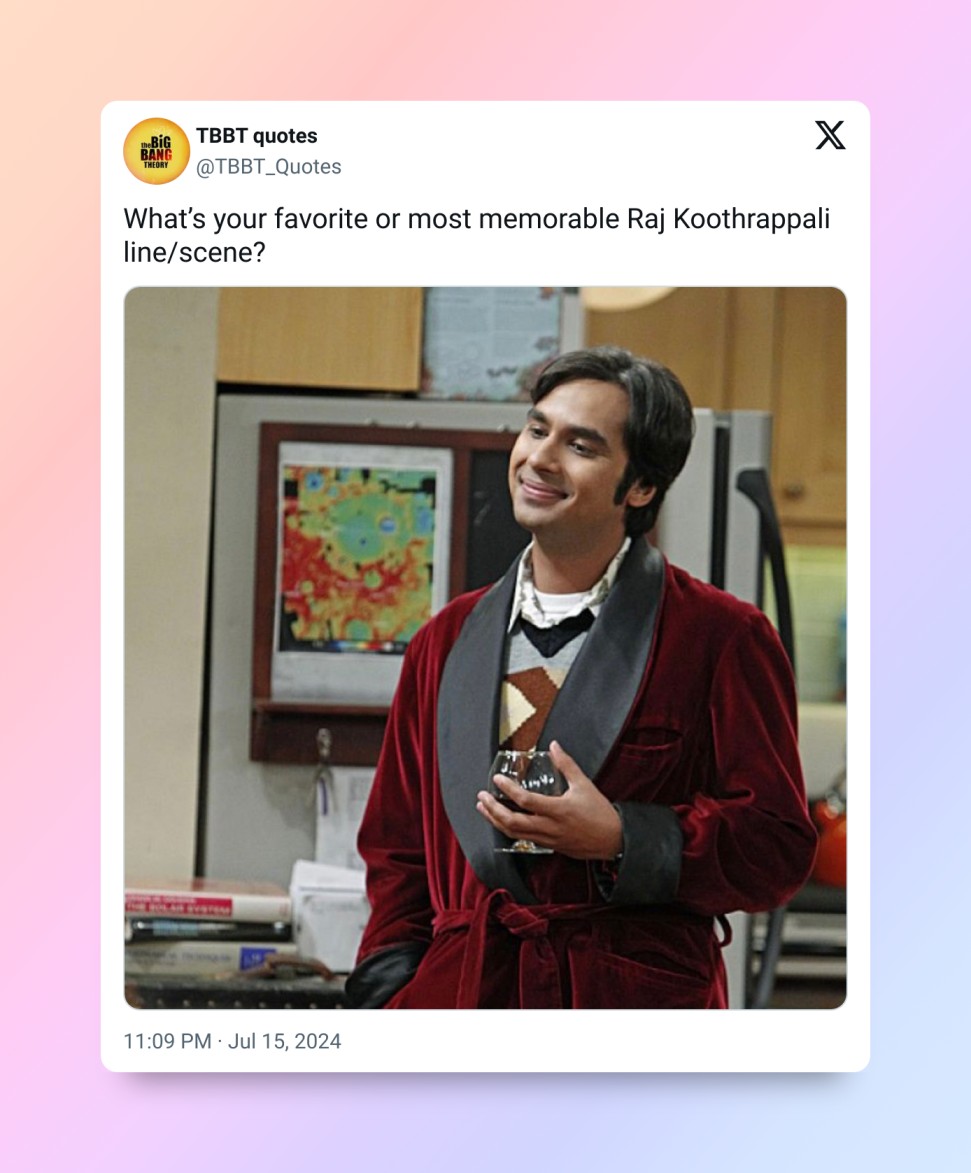
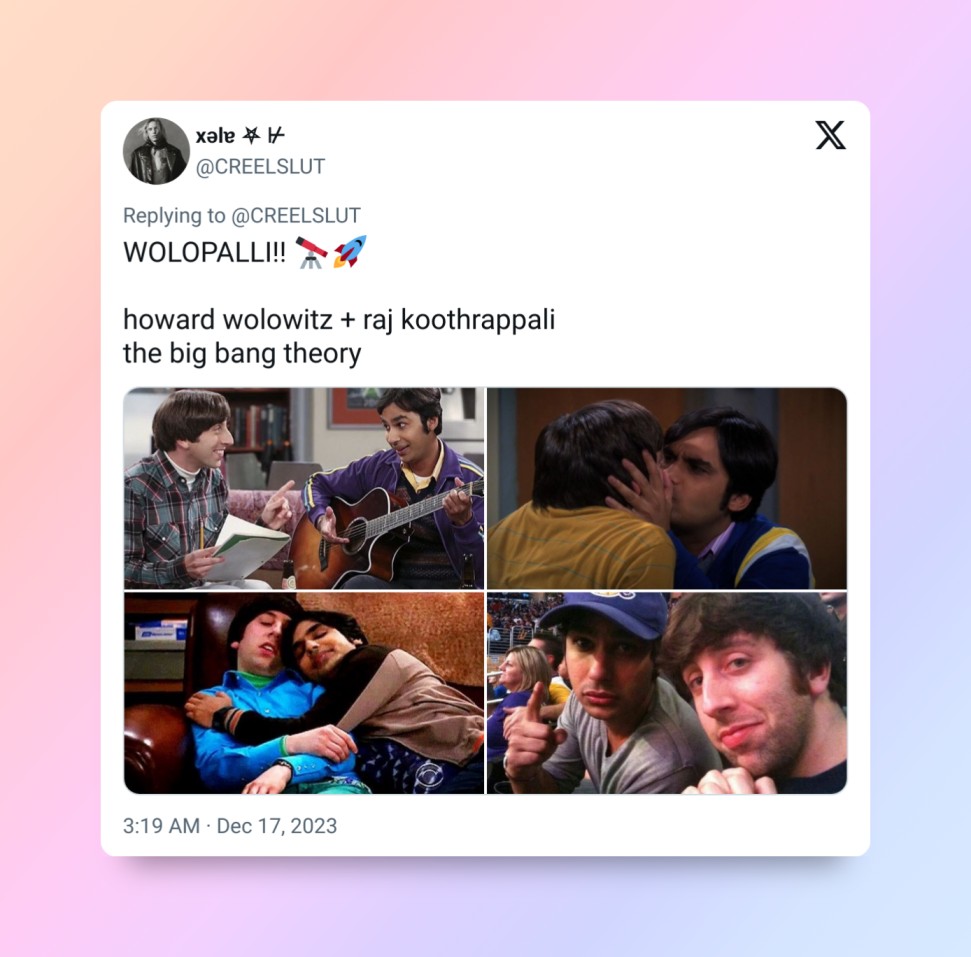
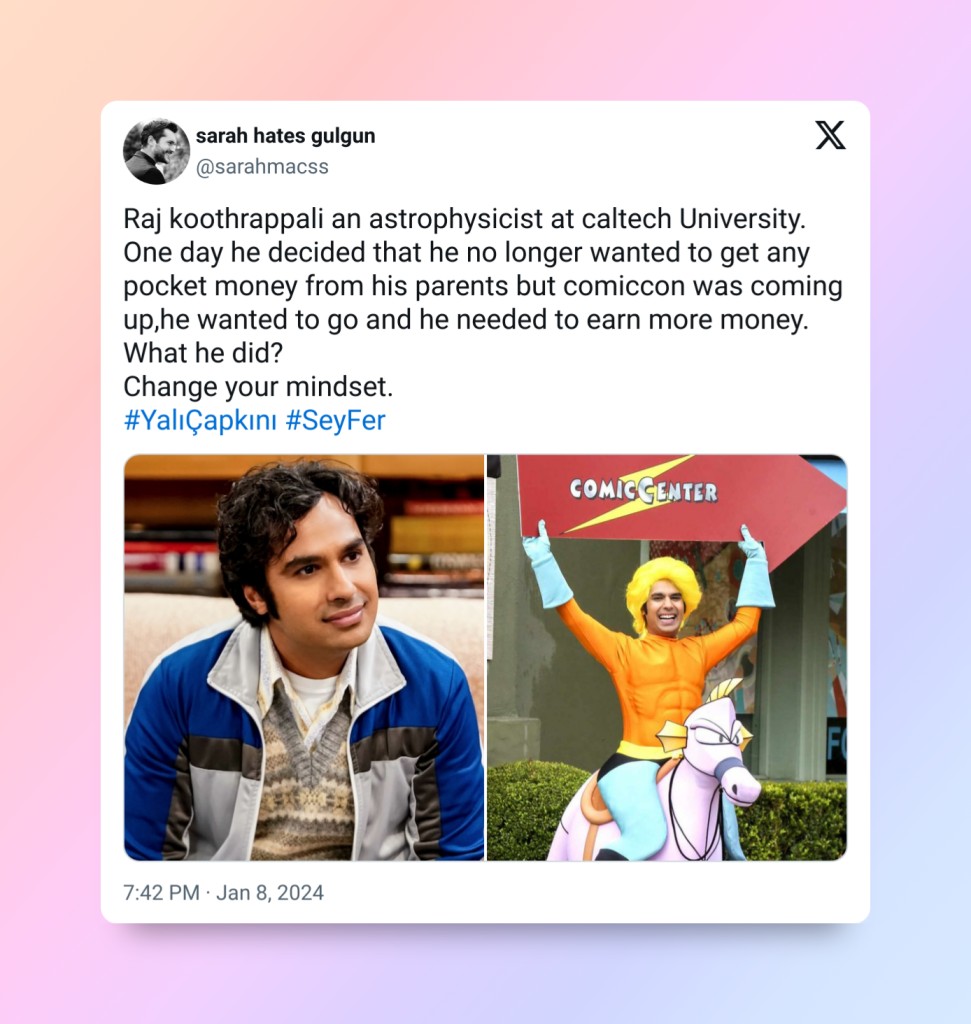
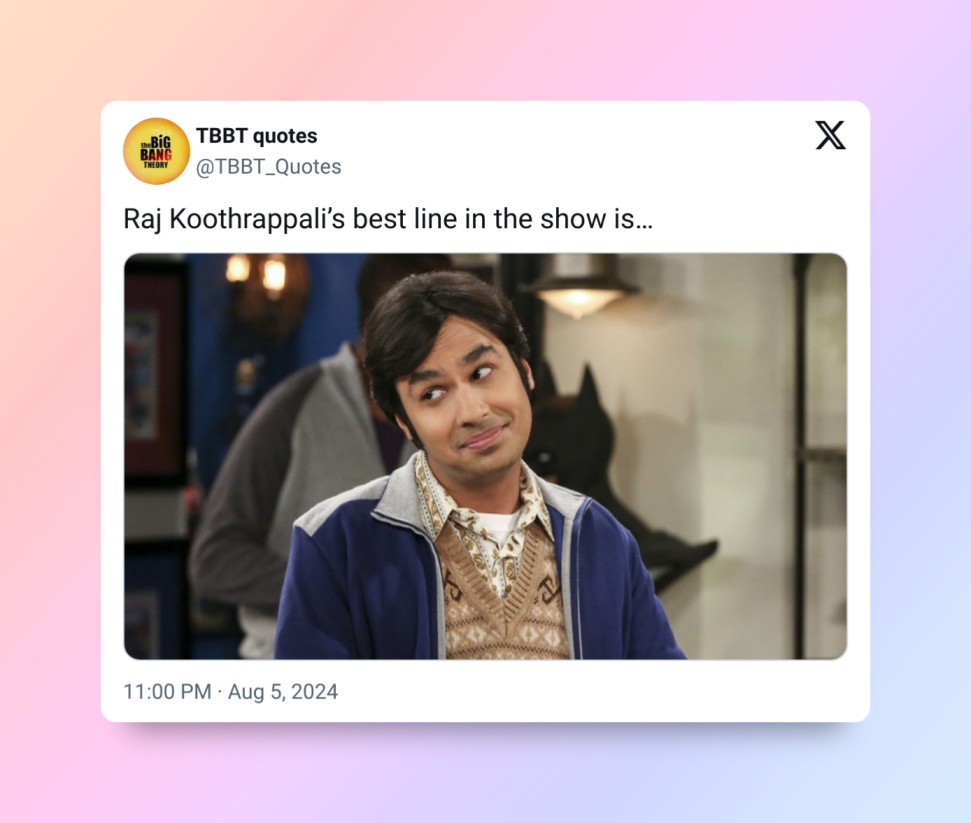
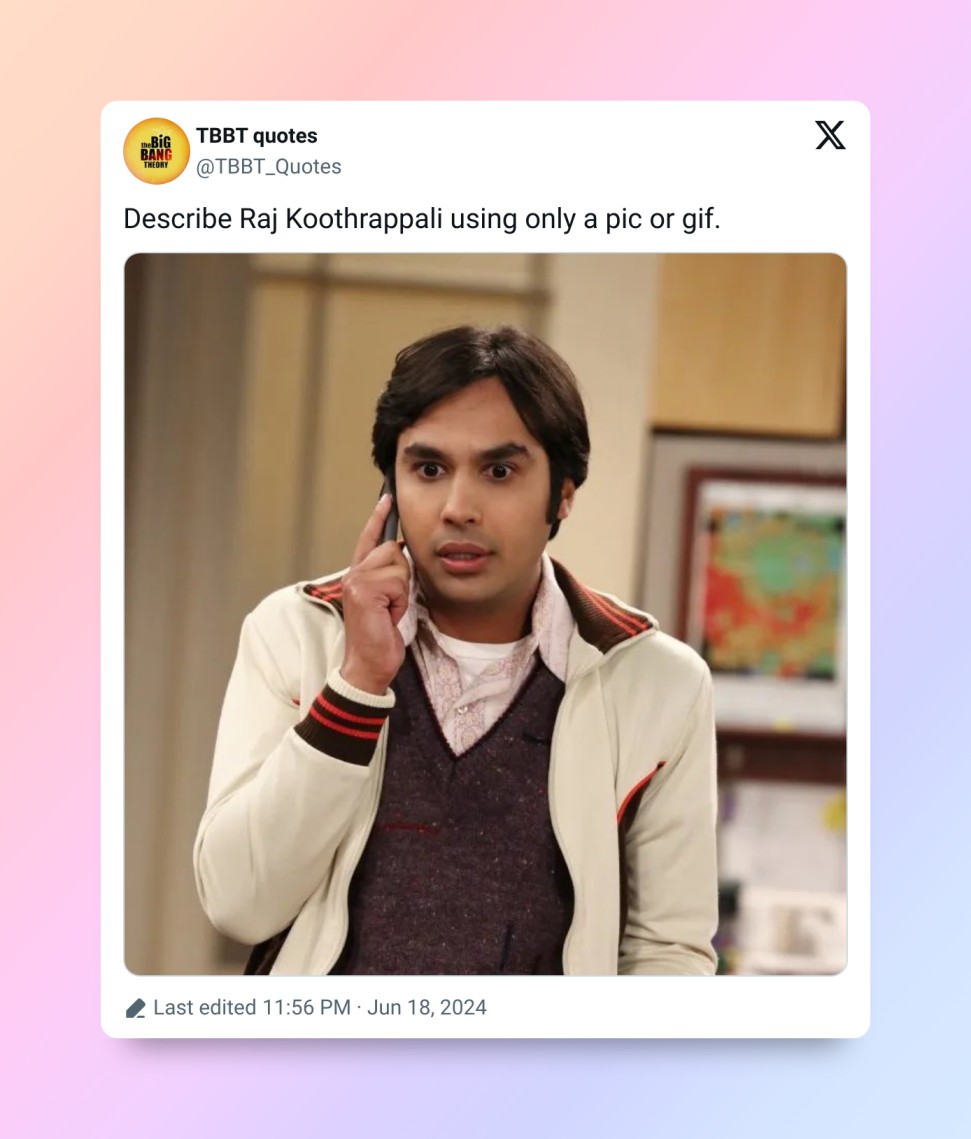






No comments:
Leave a comment to help improve Blog, maintain sustainability. Thank you !